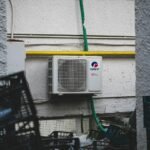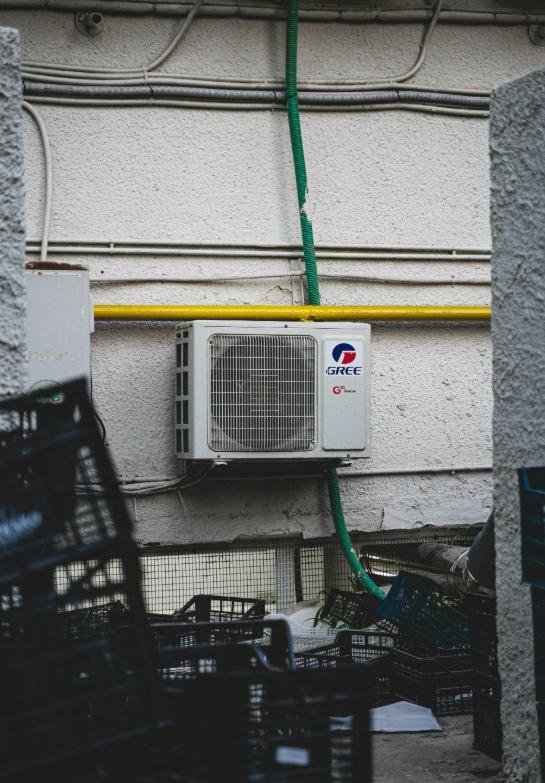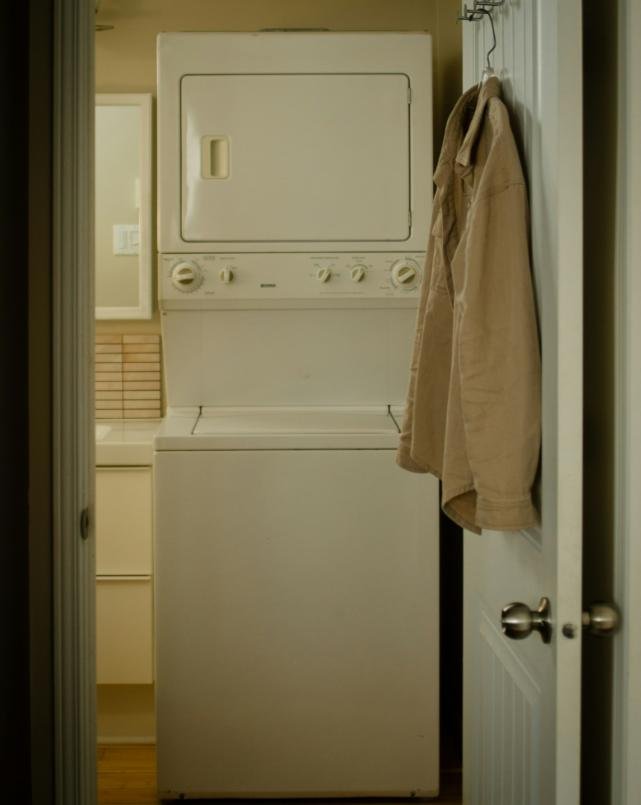Table of Contents
Introduction to Portable Air Conditioners
Portable air conditioners have become increasingly popular over the years, primarily due to their flexibility and ease of use. These appliances provide a convenient solution for cooling indoor spaces by utilizing a self-contained system that can be moved from one room to another as needed. Their design allows for effective cooling without the necessity of a permanent installation, making them especially appealing for renters, temporary living situations, or individuals who prefer not to install traditional central or window air conditioning units.
The primary function of a portable air conditioner is to cool down a defined area by drawing warm air into the unit, which then passes through a refrigerant-filled evaporator coil. This process effectively removes heat and humidity from the air, redistributing cooler air back into the environment. Many models also include additional features such as built-in dehumidifiers, programmable timers, and various cooling modes, further enhancing their usability and comfort output.
One notable advantage of portable air conditioners is their mobility. Unlike conventional air conditioning systems, which are typically fixed in one location, portable units can be relocated easily, providing targeted cooling in spaces that may require temperature regulation. Additionally, they tend to be more affordable upfront than traditional systems, making them accessible for a wider range of consumers.
However, to ensure optimal performance and longevity of a portable air conditioner, proper handling and setup are imperative. This includes allowing the unit to sit for a designated period after transportation, which is crucial for maintaining the integrity of internal components. Familiarizing oneself with the usage guidelines can prevent potential malfunctions and allow users to enjoy a comfortable environment swiftly and efficiently.
Understanding Refrigerant and Its Importance
Refrigerants play a crucial role in the functioning of portable air conditioners. These fluids are responsible for absorbing heat from the air inside a space and subsequently releasing it outside, thereby facilitating the cooling process. The efficiency of this cooling cycle largely depends on the properties of the refrigerant used, which typically exists in a gaseous state within the evaporator and converts to a liquid when pressured. The effectiveness of a portable air conditioner’s cooling capability is directly influenced by the characteristics of the refrigerant, including its boiling point and heat absorption capacity.
When a portable air conditioner is transported, the refrigerant can shift from its designated positions. Therefore, giving the unit enough time to settle after transportation is essential. This settling period allows the refrigerant to return to the compressor, evaporator, and condenser systems as needed. If a unit is operated too soon after being moved, the refrigerant may not be adequately positioned, leading to inefficient cooling. This could result in longer operation times, increased energy consumption, and a failure to reach the desired temperature levels within the room.
Moreover, there are potential risks associated with not allowing the unit to rest. If the refrigerant is not properly returned to its working parts, there is a possibility of damage to the compressor. This component relies heavily on the availability of refrigerant to function efficiently and safely, and inadequate levels can lead to overheating or even mechanical failure. Therefore, understanding the importance of refrigerant in portable air conditioners and ensuring the unit is allowed to settle appropriately are critical steps in maintaining not only optimal performance but also the longevity of the appliance.
Manufacturer Guidelines on Wait Time
When it comes to portable air conditioners, proper handling and setup are crucial for optimal performance and longevity. Most manufacturers urge that after transporting a portable air conditioner unit, a waiting period is necessary before plug-in and operation. This is primarily to allow the refrigerant within the compressor to settle down, which is essential for ensuring the unit operates effectively and efficiently.
Typically, manufacturers recommend a waiting time ranging from 30 minutes to several hours, depending on the specific model and transport conditions. For instance, units that were laid on their side during relocation usually require a longer waiting time—often up to 24 hours—before they can be safely turned on. This is due to the risk of refrigerant flooding in the compressor, which can lead to significant damage if the unit is powered on too soon.
However, it is important to note that these guidelines may differ among various brands and models. Hence, the best practice for any user is to consult the owner’s manual provided by the manufacturer. This document not only outlines the recommended wait time but also offers additional insights regarding installation and optimal usage of the specific portable air conditioner. Following these manufacturer instructions not only helps to ensure proper performance but also preserves the warranty, as operating outside specified guidelines might void any coverage provided.
In summary, while there are general recommendations for wait times before starting your portable air conditioner, it is critical to refer to the specific instructions supplied by the manufacturer for the best outcomes. This diligence will enhance the appliance’s functionality and extend its lifespan.
Recommended Waiting Period: Industry Standards
When it comes to portable air conditioners, understanding the recommended waiting period before turning on the unit is crucial. The general consensus among manufacturers and industry experts indicates that a waiting period following transport may vary significantly depending on several factors pertinent to the specific air conditioning unit and its conditions during shipping.
Typically, manufacturers suggest a waiting timeframe that can range from 30 minutes to as much as 24 hours. This variance is largely influenced by the specific design and operating mechanics of the air conditioner. For example, if a portable air conditioner has been transported upright, a shorter waiting period may be adequate. Conversely, if the unit was transported on its side or upside down, a more extended period—sometimes 24 hours—may be deemed necessary to ensure that the compressor oil settles back into place.
Additionally, the ambient temperature and humidity levels during transport can also impact the recommended waiting time. When air conditioners are subjected to extreme temperatures or humidity fluctuations, the internal components can experience additional stress, and allowing the unit to stabilize is essential. The general guideline is to minimize the risk of damaging the compressor, which can occur if a unit is activated too soon after transportation. It is also important to refer to the manufacturer’s user manual, as each model may have specific recommendations based on its unique specifications.
In summary, adhering to the industry standards concerning the waiting period for portable air conditioners plays a vital role in the long-term functionality and efficiency of the unit. Paying close attention to these guidelines can help prevent potential damage and ensure optimal air conditioning performance.
Impact of Transport Conditions on Waiting Time
When considering the operational efficiency of a portable air conditioner, it is essential to recognize how its transport conditions influence the necessary waiting period before activation. The orientation in which the unit has been transported plays a crucial role in assuring optimal functionality. Specifically, air conditioners designed to remain in a vertical position must indeed be transported upright. Should the unit be transported horizontally, there is a potential risk that refrigerant may move into the compressor, which could lead to damage if the unit is immediately powered on.
Furthermore, temperature variations encountered during transportation can impact the internal components of the air conditioner. A portable air conditioner exposed to extreme weather conditions—whether it be high heat or low temperatures—needs time to adjust to the ambient environment prior to use. If the unit has been subject to severe cold, for instance, it is advisable to allow it to acclimate to room temperature for several hours. This procedure ensures that the oil within the compressor returns to its standard operating viscosity and that any condensation has evaporated, thus preventing potential electrical malfunctions.
Guidelines recommend allowing the unit to sit for at least two to four hours if transported horizontally, and one hour for air conditioners moved vertically. These waiting periods can mitigate risks associated with compressor failure and even improve cooling efficiency by ensuring all components are prepared for operation. Ultimately, adhering to these recommendations based on transport conditions fosters reliability in performance, prolongs the lifespan of the unit, and optimizes overall user satisfaction with the air conditioning experience.
Consequences of Ignoring the Waiting Period
Turning on a portable air conditioner before allowing it to sit for the recommended period can lead to several unintended negative consequences. One of the primary risks associated with this practice is compressor damage. The compressor is a crucial component of the air conditioning unit, as it facilitates the circulation of refrigerant throughout the system. If the unit is turned on too soon, the refrigerant may not have had adequate time to settle, which could result in additional strain on the compressor. Over time, this increased pressure can lead to malfunction or even complete failure of the compressor, leading to costly repairs or replacement.
Another significant consequence of ignoring the waiting period is reduced cooling efficiency. A portable air conditioner relies on the proper functioning of the refrigerant cycle to maintain consistent and effective cooling. If the unit is activated prematurely, the refrigerant may not operate within its optimal range. This inefficiency can result in inadequate cooling performance, leaving the space uncomfortable and increasing energy consumption as the unit struggles to maintain the desired temperature. Consequently, users may also see a rise in their electricity bills due to this inefficient operation.
Moreover, there is a risk of potential leaks arising from premature use. The refrigerant is designed to circulate within a closed system, and any disturbance caused by activating the unit too soon may create stress at joints or connections. This can lead to leaks that compromise the performance of the air conditioner and may require professional intervention to address. Allowing a portable air conditioner to sit undisturbed for the recommended time is essential not only for the longevity of the unit but also for its effective performance. Taking these precautions can help users avoid the costly implications associated with improper use.
Tips for Proper Setup and Maintenance
Setting up a portable air conditioner properly is crucial for ensuring optimal performance and longevity. One of the primary considerations is the placement of the unit. It is recommended that the air conditioner is placed on a level surface to prevent issues with cooling efficiency and to minimize the risk of internal damage. An uneven surface can lead to excess vibration and potential malfunction as the components may be subjected to undue stress.
Proper venting is another critical aspect when installing a portable air conditioner. Ensuring that the exhaust hose is securely connected to both the unit and the window is essential for efficient operation. The venting kit typically comes with the unit and should be installed according to the manufacturer’s guidelines. This setup allows hot air to be expelled outside effectively, enhancing the cooling process inside the room. Make sure to keep the venting hose as straight as possible, as bends can hinder airflow and reduce effectiveness.
Addressing condensation is also vital when using a portable air conditioner. Most units will accumulate some moisture, which is generally expelled through a drainage system. However, in high-humidity environments, users may need to periodically check and empty the water tank to prevent overflow, which can lead to potential water damage and reduced performance. Regularly inspecting and cleaning the air filters will also help maintain efficiency. Clogged filters can impede airflow and force the system to work harder, resulting in higher energy consumption.
Lastly, performing routine maintenance on your portable air conditioner is essential. This includes checking the hoses, cleaning the filters, and examining seals for wear or damage. By integrating these tips into your routine, you can ensure your portable air conditioner operates effectively and remains functional for years to come.
Signs You Should Wait Longer
When considering the operation of a portable air conditioner, it is crucial to pay attention to certain indicators that may suggest an extended waiting period before turning the unit on. These signs are essential for ensuring the optimal functionality of the device and preventing potential damage.
One prominent sign that additional waiting time is required is if the portable air conditioner emits unusual noises during transportation. Such sounds could indicate that internal components have become dislodged or that there may be an issue with the refrigerant system. If you hear clanking, rattling, or grinding noises, it is advisable to delay activation and assess the unit’s condition before proceeding. Allowing the air conditioner to rest minimizes the risk of further internal complications stemming from potential mechanical misalignment.
Visible damage to the unit is another critical factor to consider before turning on a portable air conditioner. Inspect the exterior casing thoroughly for any dents, cracks, or broken parts. Such physical issues can impair the appliance’s efficiency and pose risks of further deterioration. If you observe substantial damage, consult the manufacturer’s guidelines for recommended actions and possible repair options. Waiting to operate a compromised unit can be beneficial in safely assessing its operational capacity.
Moreover, if the air conditioner has been stored improperly or not adapted to different environmental conditions, giving it more time to acclimate may be prudent. Sudden temperature changes can affect the internal refrigerant, and waiting can help restore balance before use.
Ultimately, recognizing these signs of distress or damage can guide users in making informed decisions regarding the safe operation of a portable air conditioner.
Conclusion and Best Practices
In conclusion, allowing a portable air conditioner to sit undisturbed before operation is crucial to ensure its optimal performance and longevity. After transportation, the unit may experience internal fluid displacement, particularly with refrigerants. It is generally advisable to wait for at least two to three hours, or the timeframe specified by the manufacturer, before turning the unit on. This allows the refrigerant and oil to settle back into their designated areas, preventing potential damage and ensuring efficient cooling.
Best practices for setting up a portable air conditioner include carefully reading the manufacturer’s guidelines pertaining to both transportation and installation. Some manufacturers may recommend longer waiting times based on the specific design and model, emphasizing the need for users to adhere closely to these instructions. Additionally, users should check the air conditioning unit for any signs of damage before turning it on, so as to prevent operational issues later on.
Regular maintenance is also essential to keep the air conditioner performing at its best. This includes cleaning the filters, inspecting hoses and ducts for blockages, and ensuring the unit is positioned in an area with adequate airflow. When transporting the unit, it is recommended to keep it upright to avoid impacting the internal components and affecting the refrigerant’s stability.
By understanding the importance of waiting after transport and following best practices, users can enjoy an efficient and effective cooling experience. Taking these steps not only furthers the unit’s performance but also enhances its lifespan, ensuring the investment in a portable air conditioner pays off for years to come.







